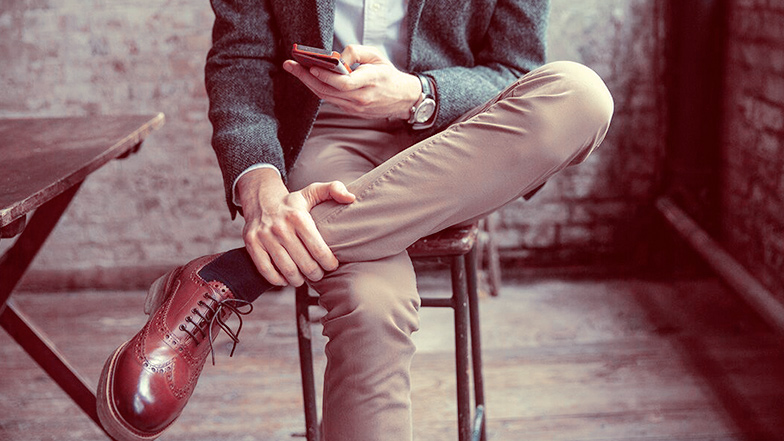Interview Dress Code Do's and Don'ts for Black Males

It only takes a few seconds for an interviewer to decide how they feel about you…
Translation? No matter how strong your experience or how polished your interview technique is, you should never underestimate the importance of a sharp interview outfit.
We asked Shaunie Brett, who leads the styling team at Thread—a free, online styling service for men who want to look great without any hassle—how to dress for an interview.
Here, Shaunie shares a five-step plan for success, plus two outfits that will help you nail (almost) every interview:
Step 1. Find out what your interviewers will be wearing
No matter what your personal style is, you don't want to look out of place.
If you wear a suit and everyone interviewing you wears jeans, for example, you'll probably feel uncomfortable—and it might even seem that you don't understand the company's culture.
Find out what's appropriate by looking at what employees are wearing in their LinkedIn profile photos (usually a good indication of what they consider professional) and checking out what people are wearing on the company's 'About us' page.
Step 2. Don't wear a brand-new outfit
Above all, interview clothes should make you feel confident and comfortable. Which means you shouldn't wear anything you've never worn before.
Say you haven't worn a suit since school, but you do your research and find that everyone at a company wears one. It's not a good idea to buy a brand new suit and wear it for the first time to your interview because you won't feel like yourself.
You also won't yet know how the suit behaves on you: Does it crease? Is there an itchy label? Are your arms restricted? Is it hot?
Instead, why not try wearing chinos, a shirt and a jacket instead of a full suit (which is totally acceptable unless you've been explicitly told to wear a suit). Or, buy a suit at least a day in advance (or earlier if it might need tailoring) and wear it around the house for a day to get used to it.
If you find that people at the company wear a variety of things—or that the dress code is casual—my advice is really simple: wear something you've always felt confident and comfortable in (or one of the failsafe outfits described below).
Step 3. Keep it cohesive
Interviewers are looking for a candidate who has it together – which means you should think about how all the elements of your outfit add up.
One tip is, always avoid wearing any more than two or three different colours. This is the easiest way to make an outfit cohesive.
Secondly, remember that your bag, umbrella and socks are all part of your look. Make sure they're smart enough that they don't let the rest of your clothes down.
Step 4. Layer up
The room you're interviewing in could be boiling or freezing. To be prepared for either eventuality, wear two layers: a shirt and jacket.
If it's warm, the shirt looks good by itself … but if the air conditioning is blasting, a blazer will look sharp and keep you warm. Look for layers made from silk (for women), and merino wool, both of which are light but insulating.
Step 5. Iron out all the details
The devil's in the details, so polish your shoes, make sure your nails are neat, iron your shirt and trousers, and keep perfume and makeup to a minimum.
In the end, it's all about showing off your skills, so you should get rid of anything that distracts (or detracts) from, well, you.
The outfit that works for (almost) every interview
For men:
A crisp white button-down shirt; chinos; brogues or boots; and a textured blazer in case the A/C is on high or you feel too casual. Wear your smartest coat on top.
Why this works: By sticking to simple basics, you'll ensure your interviewer focuses on you, not your clothes. This outfit is classic and mature, and shows more personality than a suit.
For women:
A blouse in a block colour or a crisp white shirt; dark skinny jeans or cigarette pants; brogues or loafers; and your contingency layer of choice, like a well-tailored blazer in a boyfriend style or with a nipped-in waist (and in a different colour to your trousers).
For the shirt, choose whatever fabric makes you most comfortable. Crisp white cotton is timeless, and silk or chiffon can be more flattering if you're curvier.
Why this works: It's simple, refined, and not distracting. Combining separates shows some personality, but the tailored jacket looks professional.
For more style advice from Shaunie, and to look great without the hassle, sign up to Thread today.
Still searching for your perfect position? View all available jobs now
Sign up for more Career Advice
Interview Dress Code Do's and Don'ts for Black Males
Source: https://www.reed.co.uk/career-advice/what-to-wear-for-an-interview/
0 Response to "Interview Dress Code Do's and Don'ts for Black Males"
Post a Comment